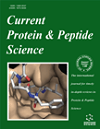
Full text loading...
We use cookies to track usage and preferences.I Understand
Actinomycetes, Gram-positive bacteria, are recognized for producing bioactive metabolites. Lonar Soda Lake, an alkaline ecosystem, hosts diverse actinomycetes with possible anticancer activities.
To assess the cytotoxic potential of fermentation metabolites from actinomycetes isolated from Lonar Soda Lake against HeLa cancer cells employing in-vitro and in-silico methods.
Evaluate the cytotoxicity of fermentation metabolites from Lonar Lake actinomycetes on HeLa cells. Execute molecular docking to forecast metabolite connections with cancer-related proteins.
The actinomycetes were isolated from the sediment sample of Lonar Lake using a selective medium and recognized by gene sequencing. Cytotoxicity on HeLa cells was assessed using the MTT assay, in consort with oxidative stress and apoptotic markers (GSH, MDA, TNF-α, and caspase 3). Molecular docking and molecular dynamics studies evaluated metabolite binding to cancer-related proteins (Bcl-2, TNF-α, caspase 3).
Fermentation metabolites of three Lonar Lake Sediment isolates (LLSD), LLSD-5, LLSD-7, and LLSD-9 showing promising cytotoxic activity against HeLa cell lines by MTT assay, also significantly modulate the oxidative stress parameters (GSH, MDA), and cell apoptotic marker (TNF-α, caspase 3). IC50 values were 34.17 µM (LLSD-5), 53.85 µM (LLSD-7), and 69.54 µM (LLSD-9). Furthermore, molecular docking displayed robust binding affinities to cancer-related proteins, uncovering the possible mechanism of action.
The fermentation metabolites actinomycete isolates from Lonar Lake exhibit significant cytotoxic activity against HeLa cancer cell lines. Both in-vitro and in-silico analyses support the potential of these metabolites as anticancer agents.

Article metrics loading...

Full text loading...
References


Data & Media loading...
Supplements

